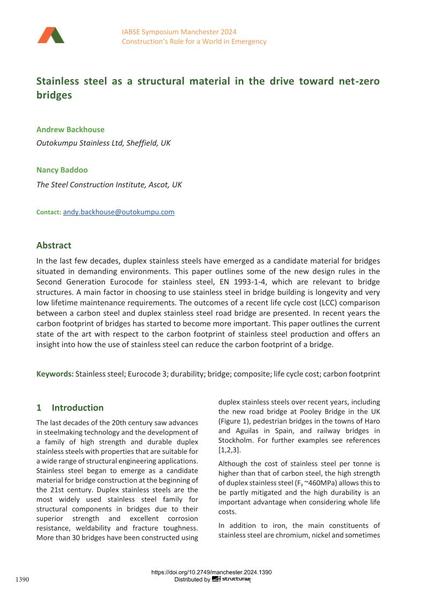Stainless steel as a structural material in the drive toward net-zero bridges

|
|
|||||||||||
Détails bibliographiques
| Auteur(s): |
Andrew Backhouse
(Outokumpu Stainless Ltd, Sheffield, UK)
Nancy Baddoo (The Steel Construction Institute, Ascot, UK) |
||||
|---|---|---|---|---|---|
| Médium: | papier de conférence | ||||
| Langue(s): | anglais | ||||
| Conférence: | IABSE Symposium: Construction’s Role for a World in Emergency, Manchester, United Kingdom, 10-14 April 2024 | ||||
| Publié dans: | IABSE Symposium Manchester 2024 | ||||
|
|||||
| Page(s): | 1390-1398 | ||||
| Nombre total de pages (du PDF): | 9 | ||||
| DOI: | 10.2749/manchester.2024.1390 | ||||
| Abstrait: |
In the last few decades, duplex stainless steels have emerged as a candidate material for bridges situated in demanding environments. This paper outlines some of the new design rules in the Second Generation Eurocode for stainless steel, EN 1993-1-4, which are relevant to bridge structures. A main factor in choosing to use stainless steel in bridge building is longevity and very low lifetime maintenance requirements. The outcomes of a recent life cycle cost (LCC) comparison between a carbon steel and duplex stainless steel road bridge are presented. In recent years the carbon footprint of bridges has started to become more important. This paper outlines the current state of the art with respect to the carbon footprint of stainless steel production and offers an insight into how the use of stainless steel can reduce the carbon footprint of a bridge. |
||||
| Mots-clé: |
pont acier inoxydable Eurocode 3
|
||||

